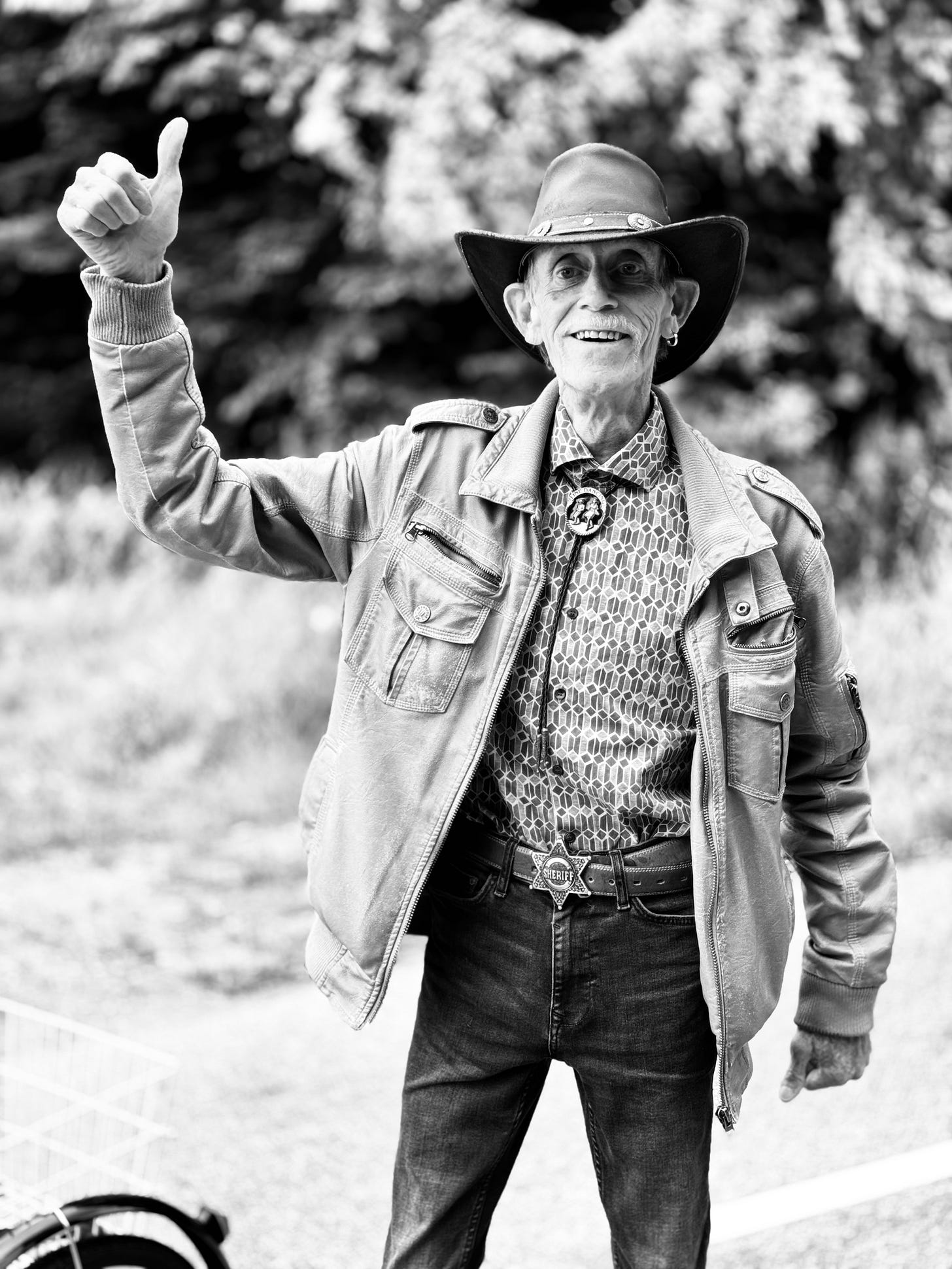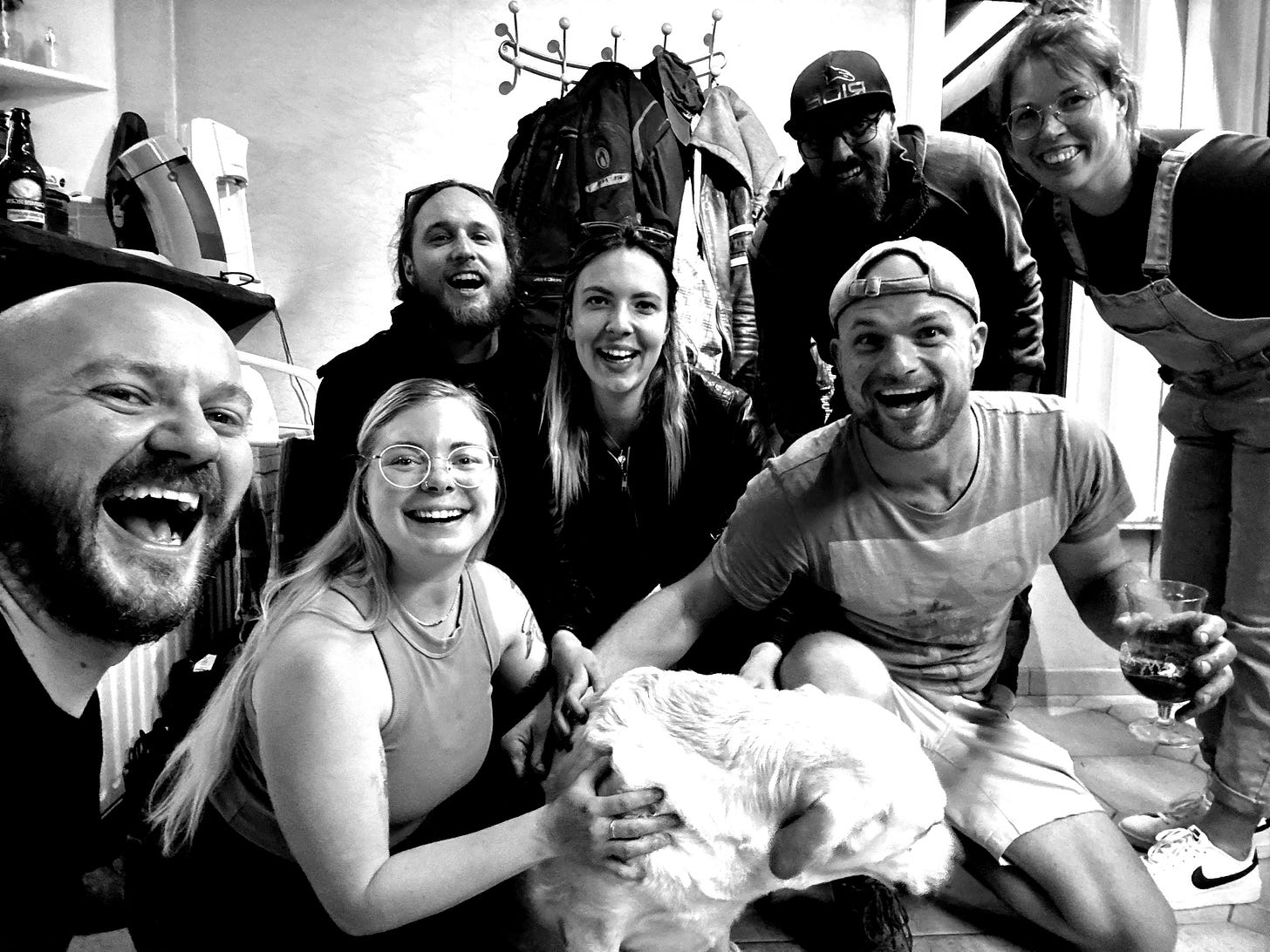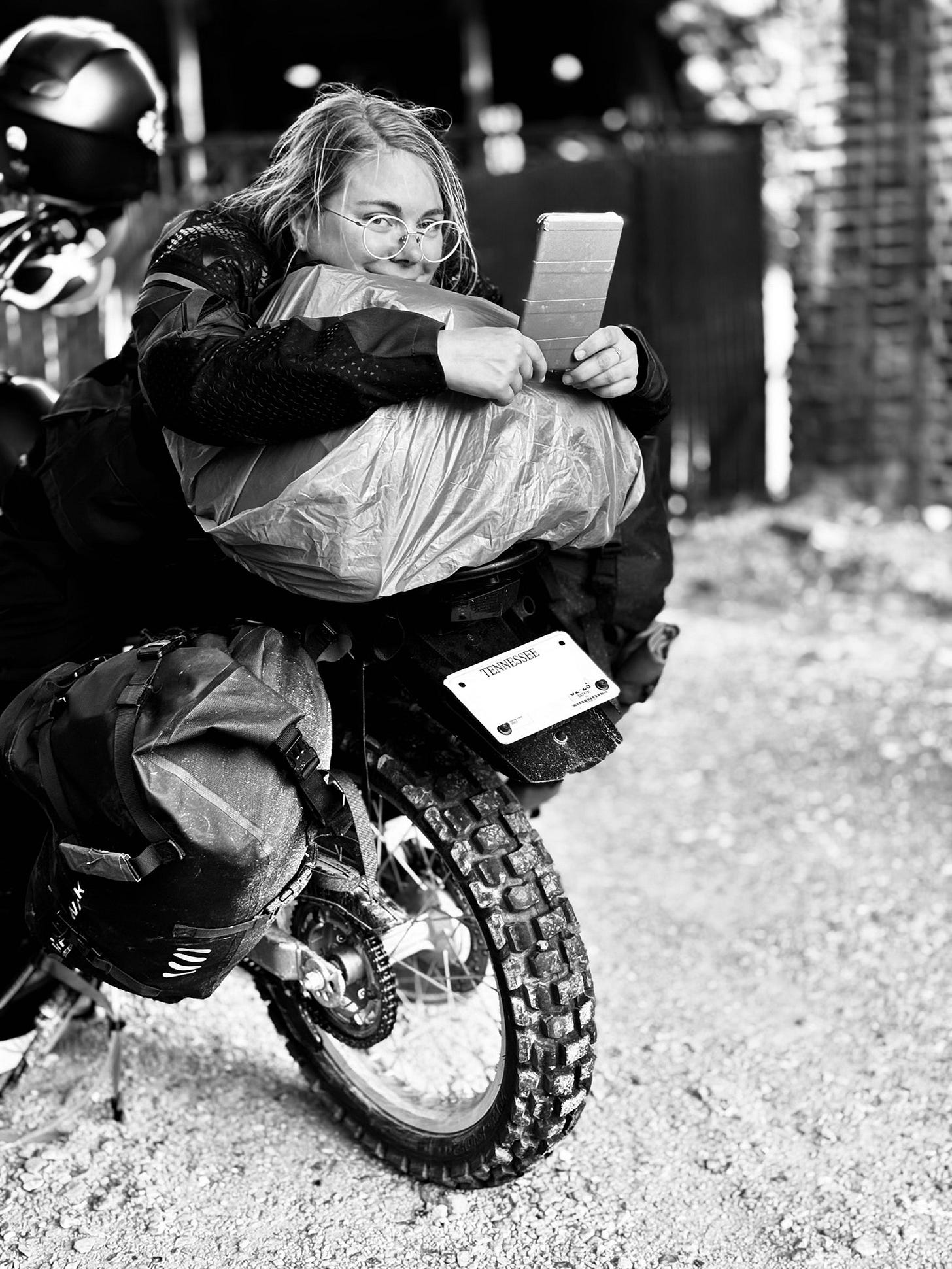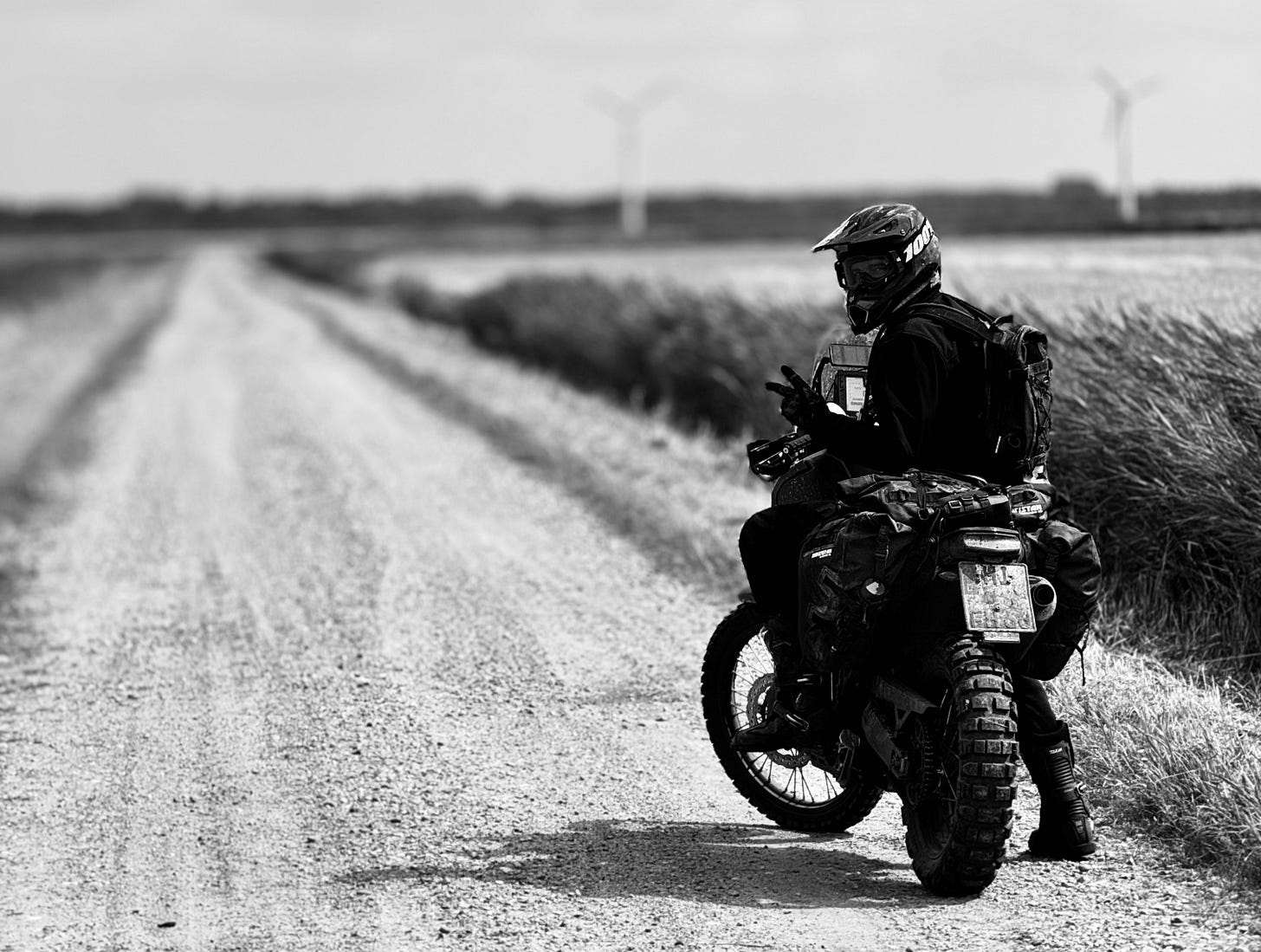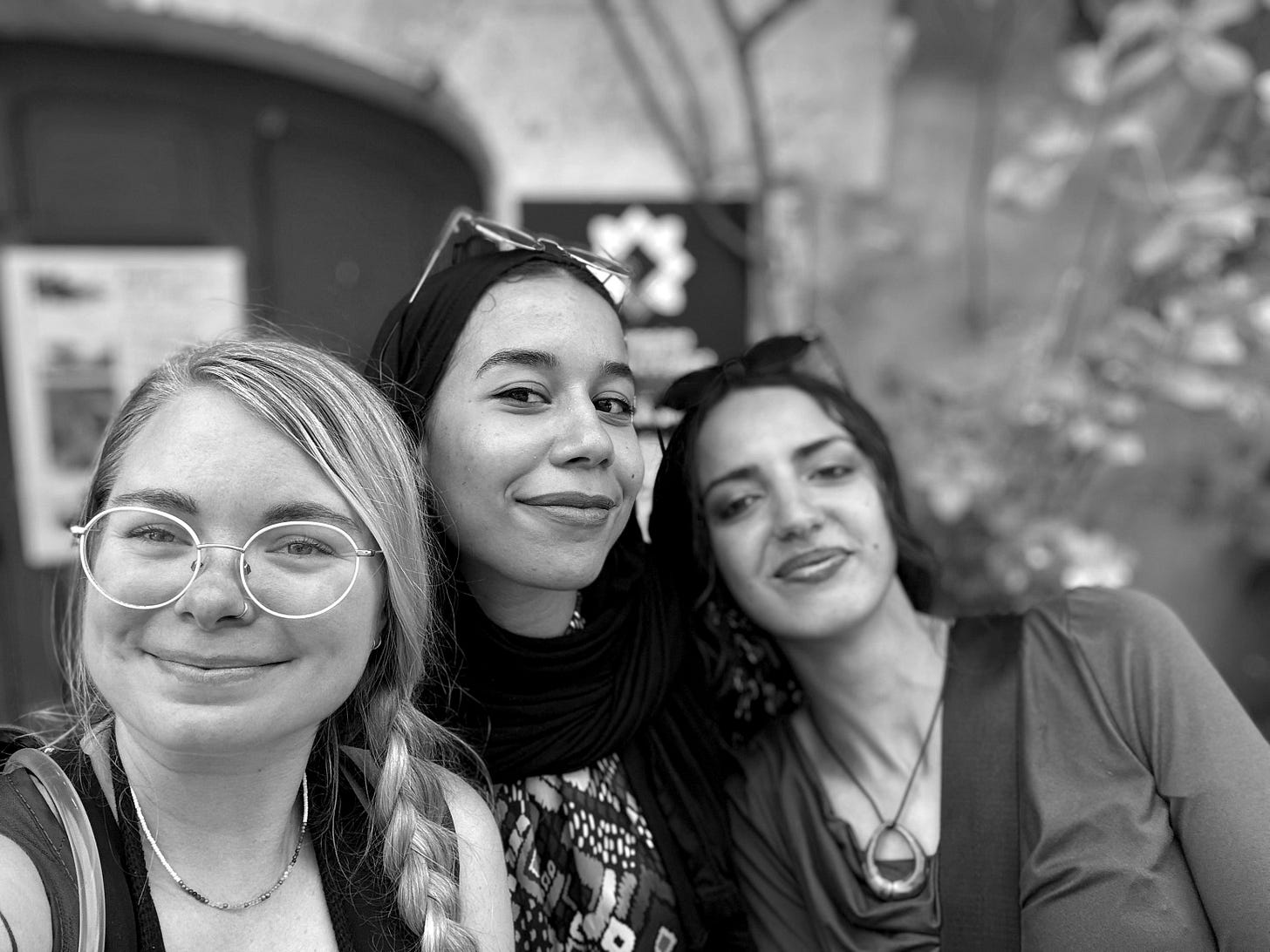Learn to Talk to Strangers
When you’re a kid, “Don’t talk to strangers” is right up there with “Look both ways before you cross the street” and “Don’t stick anything metal in the toaster.” It’s not bad advice, the world is full of people who might not have your best interests in mind, and when you’re small, naïve, and armed only with a PB&J lunchbox, caution is the right move.
The problem is, that advice tends to calcify. By the time we’re adults, it’s no longer about personal safety… it’s become habit. We avoid eye contact on the train. We give polite nods in the grocery store instead of saying hello. We build invisible fences around ourselves, and then we wonder why life feels so… small.
Here’s the thing: the moment you throw your life on the back of a motorcycle and take off to see the world, “don’t talk to strangers” becomes a liability. Strangers are the road. Strangers are how you find the best campsites, the hidden cafés, the repair shop that’s open when every sign says otherwise. Strangers are the warm bed you could definitely use after camping. Stranger are the most unique aspect of any corner of the world. They’re the reason your trip goes from “a loop through Europe” to “a chapter of your life you’ll tell until you can’t talk anymore.”
The Early Days - Strangers for Hire
Before our bikes even landed in the UK, we met strangers for a living… well, their living. Airbnb hosts, campsite owners, pub landlords. People with a vested interest in making sure we were happy customers. They wanted good reviews. They wanted repeat business.
And sure, sometimes it was just a key handoff and a smile. But other times it was more:
The Airbnb host who poured us an extra glass of wine and wanted to hear about life in Tennessee.
The campsite owner who let us watch his adorable puppy as he did chores around camp and eventually is buying you a round of shots for your birthday.
The random mechanic in France who leaps from his truck, assists you in getting a bicycle lock unwrapped from your rear wheel, and then scoots away after high fives while screaming “I AM ITALIAN!”
Those weren’t just transactions. they were tiny little moments where the wall between “service provider” and “human being” crumbled.
Enter: Bunk-a-Biker
Once our bikes finally arrived, we tapped into the magic sauce of motorcycle traveling, Bunk-a-Biker.
If you’re new to it, Bunk-a-Biker is basically the Couchsurfing of the motorcycle world, but without the “vague promise of a couch and maybe a ferret.” It’s a network of riders around the globe who open their homes, yards, or even just their driveways to other riders. For free. No payment, no catch.
It works on one principle: motorcyclists get it. They know what it’s like to be cold, wet, lost, or just plain tired after a 300-mile (480 km) day. They’ve been the one trying to find a place to pitch a tent before dark such that you don’t anger a rural farmer. They’ve been on the side of the road with a flat tire in the rain, wondering if the next village might have a shop.
Through Bunk-a-Biker, we’ve stayed with people who:
Had never met us before but handed us a house key like we’d been friends since high school.
Took us for a tour of their favorite backroads the morning after we arrived.
Fed us full barbecue dinners, complete with dessert, just because “you look like you could use a proper meal.”
No booking fees. No check-out times. Just hospitality rooted in the unspoken rule that riders take care of riders.
Two Wheels = No Walls
Traveling by motorcycle is different. In a car, you’re sealed off. Windows up, music on, climate control humming. You’re in your own little climate-controlled pod, watching the world like a movie.
On a bike, you’re in the movie. You smell the river before you see it. You feel the crosswind slap you sideways when you ride past a gap in the hedgerow. You’re exposed… to the road, the weather, and the people.
This exposure makes you approachable. People see you, not just your license plate. They see the mud splattered on your boots, the dust on your jacket, the tired grin when you pull off your helmet.
And they talk to you.
We’ve lost track of how many times we’ve heard the same opener: “Well, you’re a long way from home.” It’s usually followed by the kind of questions you want to answer:
Where are you going?
Why are you here?
How long will you be gone?
Our “elevator pitch” is polished now:
Why we’re here: “Adventure, love of travel, and a desire to take a break from the U.S.”
How we got here: “We shipped the bikes from the US to the UK.”
How long we’ll be gone: “As long as it needs to be - we have what we need for years.”
That last part always makes people lean in a little closer. You can see the wheels turning in their head: Could I do that?
Twist the Throttle, Kids are Watching
Then there are the kids. They’re not jaded yet. They see two motorcycles roll into their street and it’s the highlight of their afternoon. Almost without fail, there’s one who starts doing the universal “twist the throttle” motion - the same one we probably did when we were their age.
Sometimes we give them a little rev. Not enough to wake the local council, just enough to send a puff of exhaust and a whiff of mechanical excitement into the air. They grin. We grin. The pigeons glare at us from the lamppost.
It’s a two-second interaction that will never make it to Instagram, but it’s one of those invisible stitches in the fabric of the trip.
The Sweet Spot of Motorcycle Travel
Here’s why motorcycles are the perfect “stranger magnet.”
On foot, you’re approachable, but you move slowly. Seeing a country takes months or years. On a bicycle, it’s the same - maybe a little faster, but still difficult both physically and time consuming to the point of straining tourist visas.
In a car, you can cover ground, but you’re just a moving bubble of metal and glass. You’re safe, but distant.
Motorcycles live in the middle. You can do a 200-mile day (about 320 km) if you push, or just hop to the next town over. Either way, you’re right there in the environment. People can see your face. They can wave you over.
And because you’re so visible, you invite curiosity. At the petrol station. At the supermarket. At the ferry dock.
We’ve had people approach us while we were eating lunch on a bench just to ask about the mud on our panniers. We’ve had mechanics walk out of their shops just to say hello when we stopped for fuel. Sometimes the conversation goes nowhere. Sometimes it leads to a free coffee, a road recommendation, or even an overnight stay.
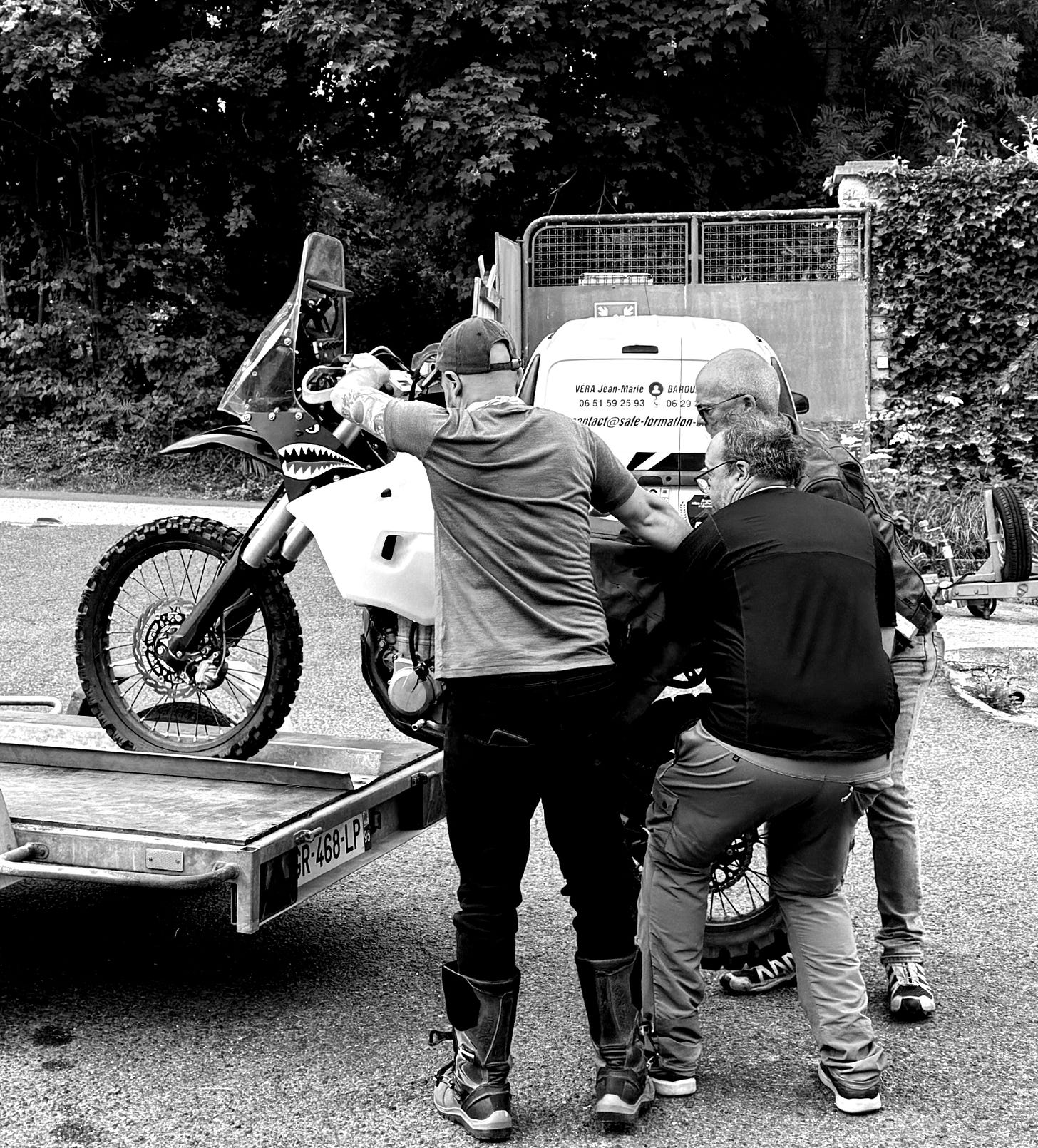
When Strangers Change the Trip
We’ve had strangers:
Give us tools when ours weren’t quite right for the job.
Offer us shelter from an incoming storm.
Insist we come in for tea and biscuits because “you look frozen solid.”
And none of that would have happened if we’d kept the wall up. If we’d followed the old childhood script and kept to ourselves.
The funny thing is, these moments become the trip. Yes, the landscapes are stunning, and yes, the roads are unforgettable. But ask us about Denmark, and we’re as likely to tell you about the man who walked up dressed in full country western gear because he’d just come from line dancing and wanting to know what the US truly was like and if we’d ever square-danced either.
The Safety Bit
Now, let’s be real: talking to strangers is not without risk.
Some people are bad news. Some situations are sketchy. Trust your gut. If something feels off - the location, the timing, the person’s energy - walk away fast. Some people will even make you feel unwelcome after you’ve been welcomed in. We’ve had occasions of this on this trip and previous ones, but ultimately you’re a guest and you grit it out with a sincere thank you and a handshake out the door.
We have the advantage of traveling mostly in places where random roadside chats are more curiosity than threat. That’s not the case everywhere. And even here, we set our own boundaries. Public spaces? Great. Someone asking you to follow them into a deserted building? Not so much.
If you’re traveling solo, especially as a woman or part of a marginalized group, your radar is going to work overtime - and it should. Awareness doesn’t kill connection. It just filters it.
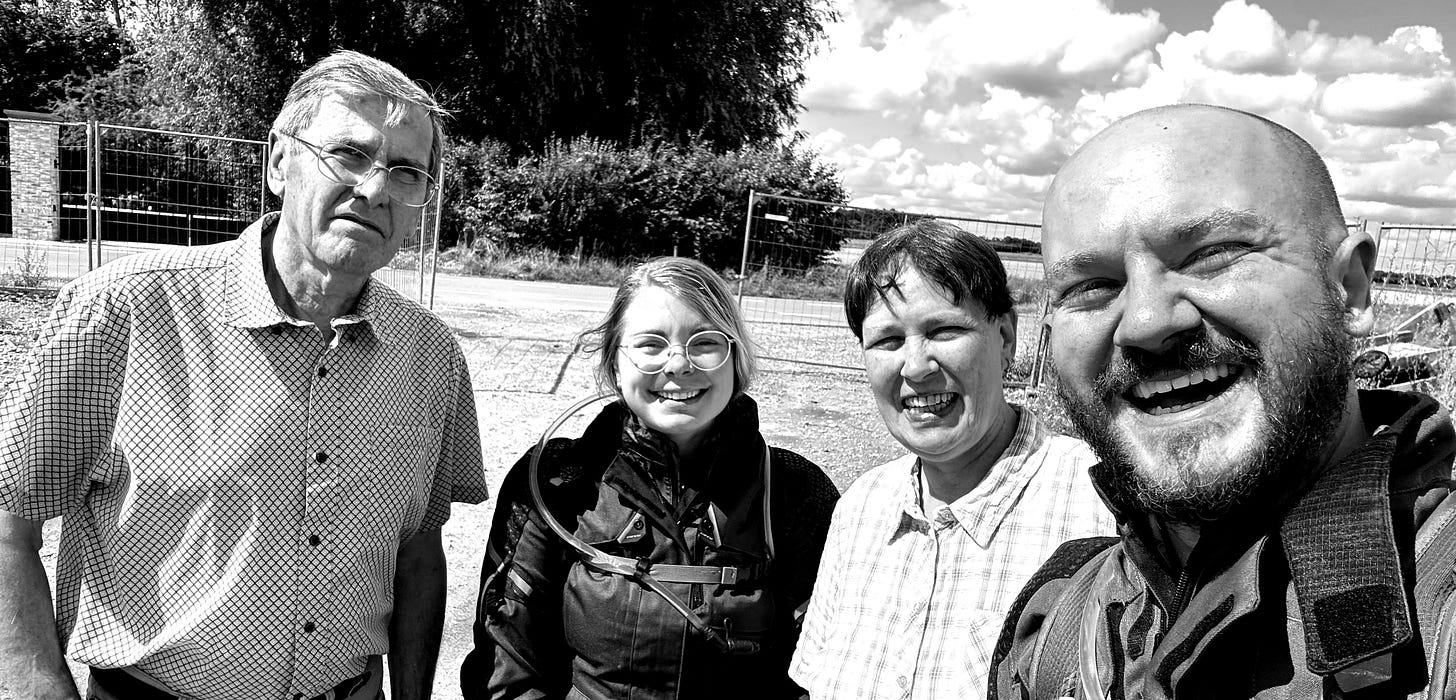
Why We’ll Keep Breaking the Rule
Every time we’ve broken the “don’t talk to strangers” rule, we’ve come away with something - sometimes tangible, sometimes just a story.
We’ve learned that people want to help. That they want to share their roads, their food, their stories. That the world is full of folks who see a traveler and think, I could make their day better.
So we’ll keep breaking it. We’ll keep saying hello. We’ll keep letting strangers become part of our trip.
Because on two wheels, the strangers aren’t just part of the scenery - they’re part of the ride. And we wouldn’t have it any other way.

